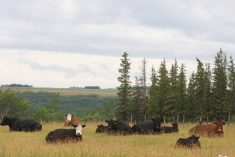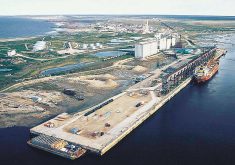It’s a hot, dry summer on the Prairies, so much so that farmers farther west have started to harvest their cereal crops for livestock feed.
A heat wave nicknamed “Lucifer” is scorching much of Europe this summer and climate change experts are suggesting these are a greater threat to human life in the short term than rising sea levels, also attributed to climate change.
Evidence continues to mount that these conditions could become the new normal.
A report published in the journal Weather puts 2015 and 2016 in the record books as being the warmest on record, with global temperatures reaching 1 C above pre-industrial levels.
Read Also

Introducing the purple tomato
Health Canada has approved bioengineered The Purple Tomato (TM), maybe leading to new culinary uses and health benefits?
Many still debate whether global warming is actually caused by humans but fewer deny that it’s occurring.
Another report out last week in the journal Nature said that it’s taking longer for regions affected by drought to fully recover. Meanwhile, the time in between droughts is getting shorter, an inverse correlation with potentially disastrous effects.
“If another drought arrives before trees and other plants have recovered from the last one, the ecosystem can reach a ‘tipping point’ where the plants’ ability to function normally is permanently affected,” Yuanyuan Fang, one of the study’s authors said in a release.
In light of this, it’s disturbing to read through the recently released Agricultural Institute of Canada report documenting serious gaps in Canada’s agricultural innovation system, arguably our best hope of preparing for an uncertain production climate.
The report highlights a steadily declining commitment to research by governments over the past three decades, despite the fact that for every dollar invested results in between $10 and $20 returned by way of productivity gains.
Private sector investment is waning as well, “due to low short-term returns on investment or insufficient incentives,” the report said.
Adoption of new technologies, such as precision agriculture, are hampered by the lack of a common analytics platform and poor rural broadband services. And there is a shortage of human capital, which is affecting research and extension capacity as well as on-farm production.
Governments must realize that soil and water will be key to the sector’s ability to adapt to a changing climate. Yet neither are likely to attract private investment.
Taxpayers are in it for the long haul and the sooner they step up the better it will be for all.















